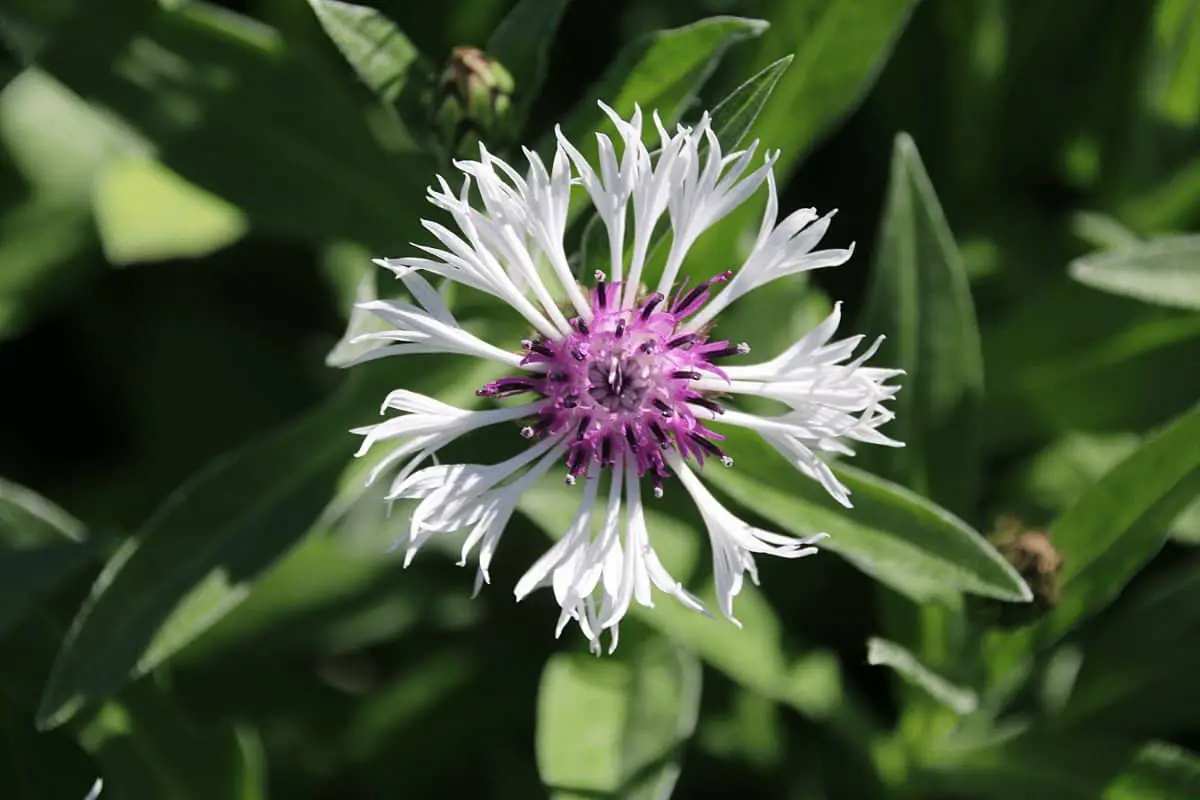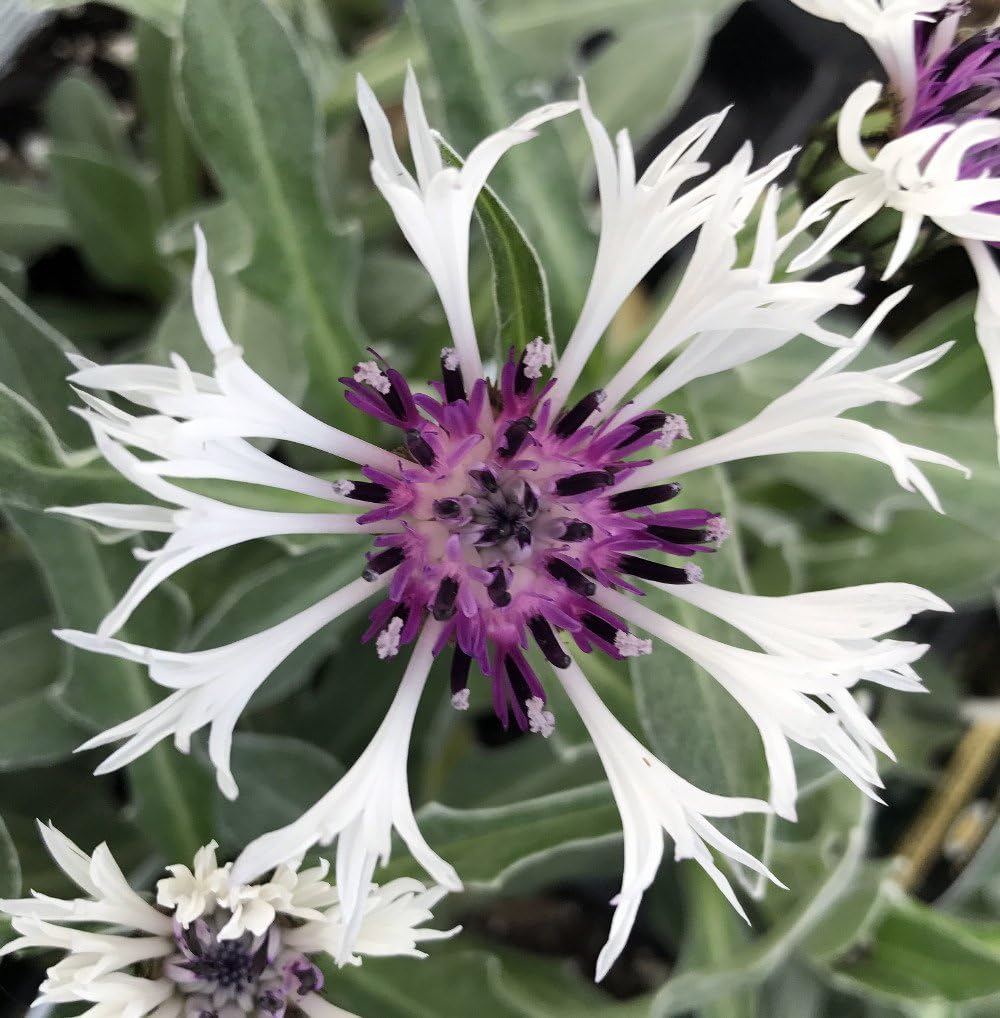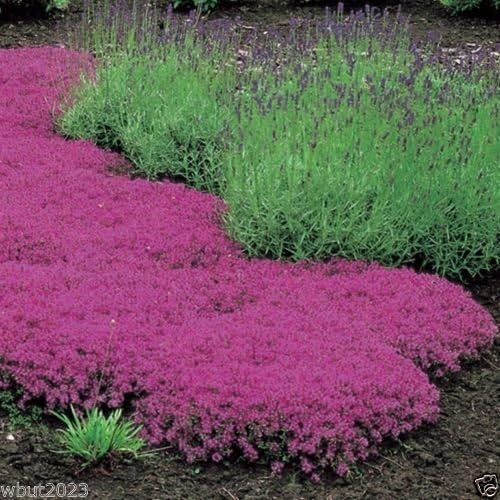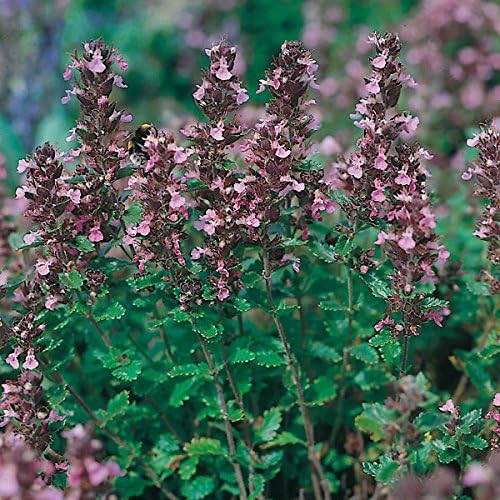Last Updated on January 17, 2023 by Griselda M.
If you want to know what is the best fast growing ground cover for slopes, then we have got you covered in this informative blog post. Ground covers provide a better option for lawns, especially if you are dealing with slopes. Slopes are more technical to maintain in terms of mowing and watering, so you need more cooperative vegetation that grows fast and is easy to maintain. Contrary to some notions that ground covers do not need maintenance, which they evidently need as every plant does, that does not mean all year round and not so stressful as maintaining lawns.
However, although they are low-maintenance plants, they are not maintenance-free. Ground cover for slopes does not grow too high and they are best employed for landscaping. Since they are low-growing plants, they don’t need to be mowed and rarely exceed their average height in growth which is why many will like to think they are maintenance-free. But, you need to tend to them in their infant stages until they cover your slope or entire landscape and then your job is over. Thereafter, you can watch as they bloom in the months to come. This is because ground cover comes with optimal benefits which makes them superior to lawns.
They have zero tolerance for weed growth, bring a more luxurious and aesthetic feature to your landscape, stabilize slopes, and add texture to your garden. You can decide to use one type of ground cover or use multiple types that make a colorful view. In this article, we review some of the finest ground covers for slopes that come with all the qualities that make them unique and therefore preferable to high-maintenance lawn covers.
Planting Ground Cover on a Slope – The Choices and Benefits
Are you thinking of planting ground cover on a slope? If so, then take heed of the benefits that they offer. Perrenials which include lambs ears, creeping phlox, ornamental grasses, and daylilies amongst others are ideal groundcovers for sunny steep slopes. Not only do they enhance your landscape when they spread out, but they are also easy to maintain. Implementing the proper ground cover care is essential in aiding them to thrive. If you want to cover your landscape at a faster rate, then opting for the best fast-growing ground cover for slopes is recommended.
Woody plants like fragrant sumac, Russian arborvitae, bearberry, and creeping junipers are amongst the best to enhance the look of your landscape. It is also essential to plant shrubs that have a sprawling growth habit which grows exceptionally well on slopes and hillsides. Additionally, the use of native plants is highly recommended to cover the ground as they thrive in their natural habitats.
If you have a sunny slope, then low-growing sedums are another great choice. This is because they are drought-tolerant and low-maintenance groundcovers. However, keep in mind that they are not extravagantly colorful like their cousin plants. Sedum acre and Sedum Kamtschaticum are amongst the hardest creeping varieties from this lot.
Hillside Fast Growing Ground Cover for Slopes – Our Picks
If you are in search of hillside fast-growing ground cover for slopes, then take heed of the following information. We have mentioned a few choices and benefits of the best fast-growing groundcover for slopes and hillsides, but let’s delve a little deeper into the subject. Amongst the most toughest and versatile ground covers that you could opt for, the dragon’s blood sedum is considered one of the best.
This is because it can grow hardily while choking out any weeds. Their hardy growth and development are due to their stems that root easily, making the proliferation process much faster. If you opt for the dragon blood serum, then you can look forward to a beautiful landscape all year round.
Here is our list of fast-growing ground cover for slopes:
- Barrenwort
- Creeping Juniper
- Creeping Thyme
- Asiatic Jasmine
- Bunchberry
- Creeping Phlox
- Creeping, Myrtle
Fast Growing Ground Cover for Shady Slopes – Recommendations
Fast Growing ground cover for shady slopes is ideal for enhancing the overall look of your garden or landscape. In this case, shade and drought-tolerant varieties would be ideal. These include variegated yellow archangel, native sedges, deadnettle, moneywort, and wild ginger amongst others. When growing these plants, it is advisable to leave the dead grass around them as they work well as mulch.
If you have a slope in your landscape that is barren because plants don’t usually grow there, then it is essential to opt for the best fast-growing ground cover for slopes in a shaded area. A spot that is plantless can also be due to large trees growing in your yard as they shade vast areas. Additionally, the zone you live in could also affect the growth of several plants, including the ground cover. To add an attractive splash of color to your yard, here are other varieties that you could opt for.
Recommended Ground Cover for Shady Slopes in Your Zone:
- USDA Zones 4-9 – Creeping Thyme Ground Cover
- USDA Zones 3-9 – Creeping Juniper and Creeping Phlox Ground Cover
- USDA Zones 4-7 – Yellow Alyssum Ground Cover
- USDA Zones 3-8 – Dragons Blood Sedum Ground Cover
- USDA Zones 5-10 – Ice Plant and Strawberry Ground Cover
- USDA Zones 7-9 Asiatic Jasmine Ground Cover
Fast Growing Ground Cover for Slopes – The Review
Amethyst in Snow (Centaurea Montana)
While it is rational and hazy to just find the Amethyst in a snow flower and conclude it’s a perennial plant with blooming flowers, this plant offers more than just what you are limiting it to.
Its purpose goes way beyond that and into being used as ground cover under appropriate growing conditions. Since we are talking about fast-growing ground covers for slopes, this one fits the prospects adequately.
It’s a great ground cover that spreads and propagates luxuriously in no distant time after wedding it to the slope. Its flowers are tempting to the hands for engagement and the major perk of a ground cover, it is easy to attend to and requires very negligible maintenance. However, it needs some level of sunshine and some level of shade, just try to strike a balance between both, minimal sunshine and minimal shade does it. It thrives best in the snow if you wondering why snow is in its name.
Pros
- Low maintenance
- Lacy flowers
Cons
- Requires regular maintenance at 12 inches maximum height
- Prone to powdery mildew
Creeping Thyme
Also known as the mother of thyme, the creeping thyme is a woody-stemmed perennial plant that grows barely above 3 inches in height.
It’s a fine choice for slopes and you won’t need to prune it often or even at all. It grows fast and distributes itself around over time.
You won’t also have to weed often since it covers your landscape and leaves no room for weeds. This thyme is different from the one used for seasonings but it has a good scent and will attract pollinators any day.
Its flowers are colorfully blessed in deep pink and blossom well between June and July. They come in a variety with colored white, pink, red, and purple.
They are excellent for sunny areas and specifically grown for landscaping in most countries for weed control, as folk medicine, and as a fragrant plant dedicated to providing aromatic air to their host surroundings.
Pros
- Low maintenance is required at 3-inch maximum height
- Grows very fast and spreads around
- Used as weed control
Cons
- Can be prone to root rot which is rare
Creeping Phlox (Phlox subulata)
Naturally, the creeping phlox loves to grow on hills and slopes. It can also be found growing on the services of stone walls and you can plant them as ground covers where they love to grow beautifully – the slopes.
They produce flowers seamlessly and not just flowers but blooming beautiful flowers that can wear your landscape an entirely new look.
It grows substantially and occupies their territory with a sense of ownership. They are densely packed in unison making them a pleasant sight from afar. The creeping phlox is deer-resistant and also irresistible to butterflies.
It can however grow up to 6 inches in height and would require you to prune seasonally. Maintenance isn’t much of a big deal with it. Just ensures it receives enough moisture, you can water it weekly and it would be fine with that, and then it needs ample sunlight to thrive.
It comes in the colors red, white, rose, blue, lavender, purple, and pink. Its spring flowers are enchanting and provide some of the finest ground covers you can ever get.
Pros
- It is deer resistant
- Grows very fast and spreads
Cons
- 6 inches high and needs seasonal pruning
Bunchberry (Cornus Canadensis)
While the majority of plants will require a benchmark of sunlight to grow and glow, the bunchberry is towing a different path in terms of such preferences.
It thrives well in a shaded area so if you are looking for a shade-loving plant, you’ve found one in the bunchberry. Most times, your sloppy landscape is heavily shaded and most of the plants you intend to use for ground covers are all sun-loving, this is a rescue.
It’s a deciduous shrub native to North America but it doesn’t mean you can’t use it in your region. You need to keep up with trimming, however since it grows so proud at 9 inches maximum height.
The flowers display their glorious presence from May to July in white colors. It is deer-resistant and rabbits have got nothing on it equally. Native to woody areas, it is perfect for shady woodland gardens. And by the way, it has fruits but we aren’t certain if they are edible yet.
Ground Cover for Slopes: Pros
- Deer and rabbit resistant
- Grows in shady areas
Cons
- Grows too high at 9 inches and requires much attention
Spotted Deadnettle (Lamium maculatum)
With its dazzling silver leaves, the dead nettle is a premium choice for ground cover in most regions where it is favorable but comes with a little bit of a challenge, it is very invasive in certain landscapes or soil textures.
It is wise to consult a landscaper first before getting the spotted dead nettle for ground cover. It can be used for ornaments with a twofold variety in that it reflects its charming blossoms colorfully.
There is the purple color which is a variant or best known botanically as a cultivar. It is named “purple dragon” and the pink variant or cultivar has the beautiful “silver shield”.
They grow to a maximum height of 9 inches so you ditch the idea of getting lazy when it comes to pruning once in a while. The flowers arrive in all their glory from May to July.
The flowers come in the color variants of pink, white, red, or purple. There are restrictions to planting it across some regions of the United States due to its invasive nature, be guided before using it.
Pros
- Comes in bright dazzling colors
- Has ornamental uses
Cons
- It is invasive
- Grows at a maximum height of 9 inches
Sweet Woodruff (Galium odoratum)
If you love lush greenery with a touch of white standing out, then you are looking for the Sweet Woodruff. It is a low-maintenance ground cover if you are not ready to get involved in routine maintenance culturing.
It has a great fragrance to add to its pretty properties and perhaps compensate for its invasive properties. Invasive in some areas, you don’t want it encroaching into restricted territories. You need a consultation from relevant authorities if it’s okay for your soil.
You should note however that moist soils provide a haven for it thrives and if your soil is moist, it can display its invasive properties and possibly go overboard with it. Beyond its imposing tendencies, it’s a great plant and a perfect ground cover for dry shades like under trees.
Height might come as another challenge, at 12 inches maximum, it is indeed a proud outstanding plant and needs to be tamed regularly.
Flowers are a given, her flowers blossom in white colors when spring sets in. Since it loves to show its imposing tendencies in wet soils, planting it in dryland areas where it can be starved of substantial moisture can be a good way of limiting its invasive properties. This doesn’t mean you should starve it of water entirely, it would mean calling it a day.
You should be able to come to a reasonable compromise between watering and starving. Too much of each can ruin the plant and there’s a need for balance.
Pros
- Has a pleasant fragrance
- Weed control
Cons
- Has the highest maximum height at 12 inches which calls for constant pruning
Wall Germander (Teucrium chamaedrys)
You could get bored of conventions as you engage in ground covers for your sloppy landscapes and find a perfect getaway with the Wall Germander.
It’s a broadleaf woody-stemmed plant that stays evergreen all year round. Typically, it is used to grace retaining walls or in knot gardens. It has a great affinity for the sun and you dare not rip it off that pleasure else it will say its goodbyes.
It is arrogant and can extend to 12 inches in height. When it decides to bloom with flowers in July, lavender, and pink become its favorite colors to use.
You need to keep up with some level of maintenance here considering how high the plant grows. If you don’t trim regularly, the plant will have no leash in growing bushy and shrubby. This is a compromise on the ideal nature of ground covers for slopes, so maintenance is necessary but not overly.
Pros
- Weed control
- Away from the norms
Cons
- Maximum height of 12 inches requires regular maintenance
Ground Cover for Slopes, Verdict
The creeping thyme comes as the ultimate choice in our verdict having virtually no anticipated problems and barely growing above 3 inches, fitting the low-maintenance description of ground covers. It is also used as a favorite for landscaping and is useful in weed control. Ultimately, you have a variety of other choices when it comes to the best fast-growing ground cover for slopes which you could opt for. Remember to consider your zone when making your choice. Also, opting for native plants will afford you a lush landscape all year through.
FAQs
What is the quickest growing ground cover?
The fastest growing ground cover is the annual flowering plant, Phlox Drummondi. This species can be found in gardens, roadsides and other disturbed areas throughout much of the United States. In the Southeast, this species can be found along roadsides and in fields from Virginia to Florida and west to Missouri. The flowers are usually pink or lavender but can also be white, yellow or mauve.
Another largest ground cover is the perennial herb, Salvia splendens, which grows up to 8 inches tall. This species is found throughout the United States, except for Alaska, Hawaii, and the West Coast. It is found in a variety of habitats, including roadsides, waste areas and disturbed sites. It prefers a sunny location.
What do you plant on slopes for erosion control?
When you’re on a slope, you need to be able to control erosion and sediment. So we use vegetative cover to help with that. We use grasses and small shrubs, or we may use trees.
For areas where we have the ability to create more soil, we will add organic matter like compost or manure.
The purpose of that is to create an environment that’s more hospitable to plants. So when the plants grow, they don’t have to compete for water. In a flood-prone area, there are two things that we need to control erosion: one is to build up the soil and the other is to hold the water.
We will use shrubs to hold the water. We also will use woody plants. We will plant trees where it’s a steep slope, because you can get trees that are very tolerant to the soils on slopes. They don’t mind the wet conditions and they don’t mind the acidity.
Does creeping thyme spread fast?
It is possible to grow thyme from seed, but you should have a green thumb for that. It grows very slowly, so it's not going to become invasive in the first place. If it gets too big for your liking, you can cut it back. Or if you live near the sea, you could leave some of it in the ground and let it die back in winter.
But it will always come back next year.
Does creeping thyme come back every year?
It really does. It is such a bright green color in the spring and summer, then it turns to a deep purple-ish-grey in the fall and winter. It comes back in the spring as a light grey, with tiny yellow flowers.
It is a pretty, yet subtle plant that grows very well in my garden. I have to keep it trimmed so it doesn't grow too big. I can see why it would be such a good choice for a garden, it is hardy, easy to grow and looks so pretty.
FAQs
What is the quickest growing ground cover?
The fastest growing ground cover is the annual flowering plant, Phlox Drummondi. This species can be found in gardens, roadsides and other disturbed areas throughout much of the United States. In the Southeast, this species can be found along roadsides and in fields from Virginia to Florida and west to Missouri. The flowers are usually pink or lavender but can also be white, yellow or mauve.
Another largest ground cover is the perennial herb, Salvia splendens, which grows up to 8 inches tall. This species is found throughout the United States, except for Alaska, Hawaii, and the West Coast. It is found in a variety of habitats, including roadsides, waste areas and disturbed sites. It prefers a sunny location.
What do you plant on slopes for erosion control?
When you’re on a slope, you need to be able to control erosion and sediment. So we use vegetative cover to help with that. We use grasses and small shrubs, or we may use trees.
For areas where we have the ability to create more soil, we will add organic matter like compost or manure.
The purpose of that is to create an environment that’s more hospitable to plants. So when the plants grow, they don’t have to compete for water. In a flood-prone area, there are two things that we need to control erosion: one is to build up the soil and the other is to hold the water.
We will use shrubs to hold the water. We also will use woody plants. We will plant trees where it’s a steep slope, because you can get trees that are very tolerant to the soils on slopes. They don’t mind the wet conditions and they don’t mind the acidity.
Does creeping thyme spread fast?
It is possible to grow thyme from seed, but you should have a green thumb for that. It grows very slowly, so it's not going to become invasive in the first place. If it gets too big for your liking, you can cut it back. Or if you live near the sea, you could leave some of it in the ground and let it die back in winter.
But it will always come back next year.
Does creeping thyme come back every year?
It really does. It is such a bright green color in the spring and summer, then it turns to a deep purple-ish-grey in the fall and winter. It comes back in the spring as a light grey, with tiny yellow flowers.
It is a pretty, yet subtle plant that grows very well in my garden. I have to keep it trimmed so it doesn't grow too big. I can see why it would be such a good choice for a garden, it is hardy, easy to grow and looks so pretty.
Tony Manhart is a passionate gardener who has been tending to gardens for over 20 years. He takes pride in creating beautiful outdoor spaces with plants, trees, and shrubs that can thrive in any environment. He loves to share his knowledge with others and has taught classes on gardening basics and advanced techniques. He is committed to sustainability, using natural and organic methods to create and maintain gardens. He also works with local organizations to create green spaces for communities. When he’s not gardening, Tony enjoys hiking, reading, and spending time with his family.








